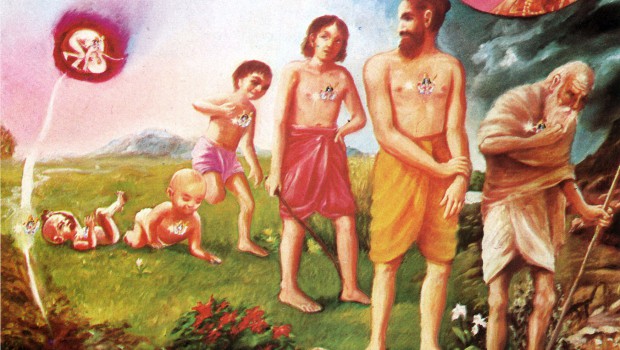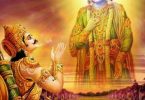Question: How do we define “prana” or “Life air” – how do you perceive it? It seems to be so close to consciousness. How do we relate it to our eternal soul? We say after the soul leaves the body we no longer are “alive”- how does prana fit in here?
Answer by Romapada Swami: Prana is not the soul, but is the life force within the body, moving throughout the body as the ‘air of life’, sustained and supported by the presence of the soul. We perceive the presence of prana as ‘energy’. Weak prana is perceived as feeling pervasive weakness of the body, and visa versa.
When the soul leaves the body, so does prana. Consider Sri Isopanishad Mantra 17, where we find the terms: { vayu—air of life; anilam—total reservoir of air; amrtam —indestructible}. “Let this temporary body be burnt to ashes, and let the air of life be merged with the totality of air. Now, O my Lord, please remember all my sacrifices, and because You are the ultimate beneficiary, please remember all that I have done for You.”
Below are some scriptural references where prana is spoken about, plus one reference from a Back to Godhead article.
Consciousness is the sign of the living entity, or the soul. The existence of the soul is manifest in the form of consciousness, called jnana-Shakti. The total consciousness is that of the gigantic virat-rupa, and the same consciousness is exhibited in individual persons. The activity of consciousness is performed through the air of life, which is of ten divisions. The airs of life are called prana, apana, udana, vyana and samana and are also differently qualified as naga, kurma, kakara, devadatta and dhananjaya. The consciousness of the soul becomes polluted by the material atmosphere, and thus various activities are exhibited in the false ego of bodily identification. [SB 3.6.7 purport]
The movements of the body are first generated from the heart, and all the activities of the body are made possible by the senses, powered by the ten kinds of air within the body. The ten kinds of air are described as follows: The main air passing through the nose in breathing is called prana. [SB 3.6.9 purport]
The living entities are merged into the air of life, which acts in different ways for circulation. There is prana, apana, udana, vyana and samana, and because the life air functions in this fivefold way, it is compared to the five-hooded serpent. [SB 4.29.6 purport]
“…if you eat the wrong foods, such as meat, you deplete your chi, your inner bodily energy. Sex and drugs have the same effect, inviting disease and death. Thus, as our conversation went on, it became clear that since the chi can be depleted, it is not the atma, the life force proper.
In Vedic terminology, the chi correlates more with subtle energies in the body, as described in Ayurvedic texts. Prana, for example, is the life energy that contributes to respiration, oxygenation, and circulation. All motor and sensory functions are linked to prana, whose more subtle aspects, ojas and tejas, seem to correspond to chi. [BTG #43-05, 2009]







